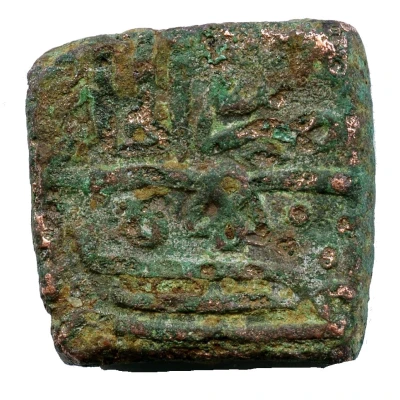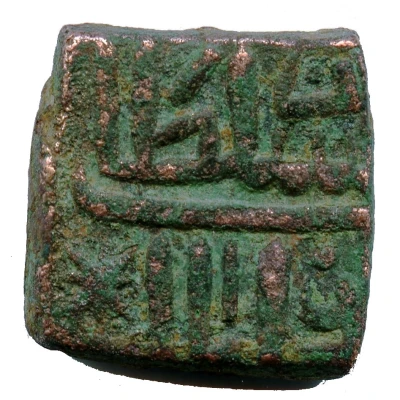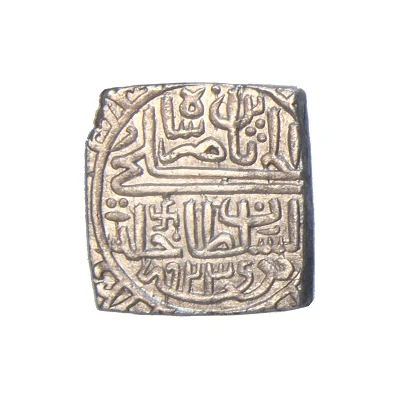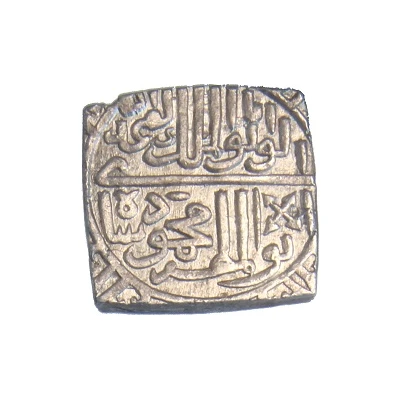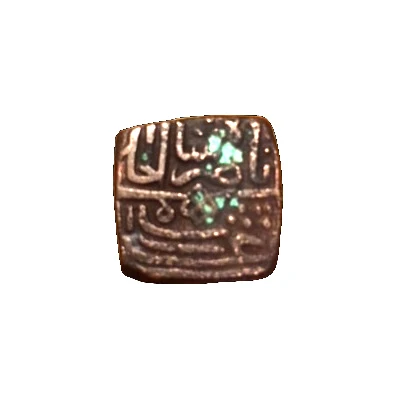
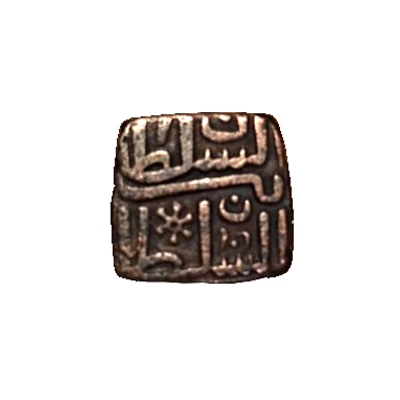

1 Falus - Nasir Shah
| Copper | 11.3 g | - |
| Issuer | Sultanate of Malwa (Indian Sultanates) |
|---|---|
| Type | Standard circulation coin |
| Years | 907-917 (1501-1511) |
| Calendar | Islamic (Hijri) |
| Value | 1 Falus |
| Currency | Tanka (1401-1562) |
| Composition | Copper |
| Weight | 11.3 g |
| Size | 18.5 mm |
| Thickness | 4.2 mm |
| Shape | Square (irregular) |
| Technique | Hammered (Weight varies 10.50-11.30g) |
| Orientation | Variable alignment ↺ |
| Demonetized | Yes |
| Updated | 2024-10-05 |
| Numista | N#145848 |
|---|---|
| Rarity index | 85% |
Reverse
Al-sultan bin al-sultan
Script: Arabic
Edge
Plain
Comment
In this type (GG: M143), there are many variations on the Reverse side.
Some examples are given below:
E.g. 1:
E.g. 2:
Obv: Rev:
E.g. 3:
Obv: Rev:
E.g. 4:
Obv: Rev:
The position of the date as well as star markings varies on the Reverse of these coins.
The GG#M143 variety is a lighter variation of GG#M140 N#104743
___________________________________________________________________________________________
The Malwa Sultanate (Persian: سلطنتِ مالوہ) was a late medieval Islamic sultanate in the Malwa region, covering the present day Indian states of Madhya Pradesh and south-eastern Rajasthan from 1392 to 1562. It was founded by Dilawar Khan, who following Timur's invasion and the disintegration of the Delhi Sultanate, in 1401/2, made Malwa an independent realm. In 1561, the Sultanate was conquered by the Mughal empire from its last ruler, Baz Bahadur and it became a subah of the empire.
Nasir Shah took great interest in his coinage judging from the number of special issues that were issued during his reign and from the changes he made to coinage system during the latter part of his reign. While maintaining the square format typical of his father's reign, he also issued coins in round shape and one in diamond shape.
Interesting fact
One interesting fact about the 1 Falus coin from the Sultanate of Malwa is that it features a unique blend of Islamic and Hindu architectural styles on its reverse side. The coin's design includes a depiction of a mosque with a dome and minarets, surrounded by a decorative border that incorporates elements of Hindu temple architecture. This fusion of styles reflects the cultural exchange and syncretism that occurred during the Sultanate's rule in medieval India.
